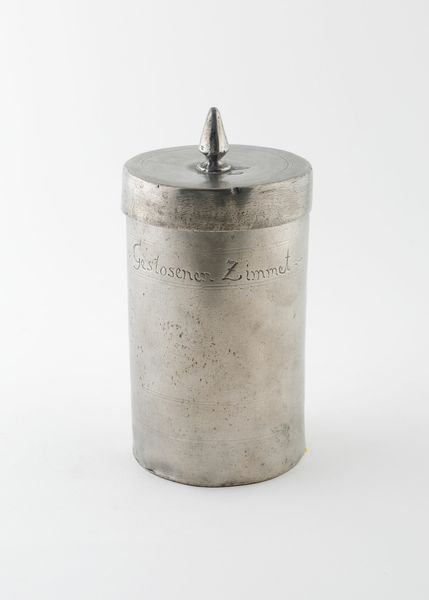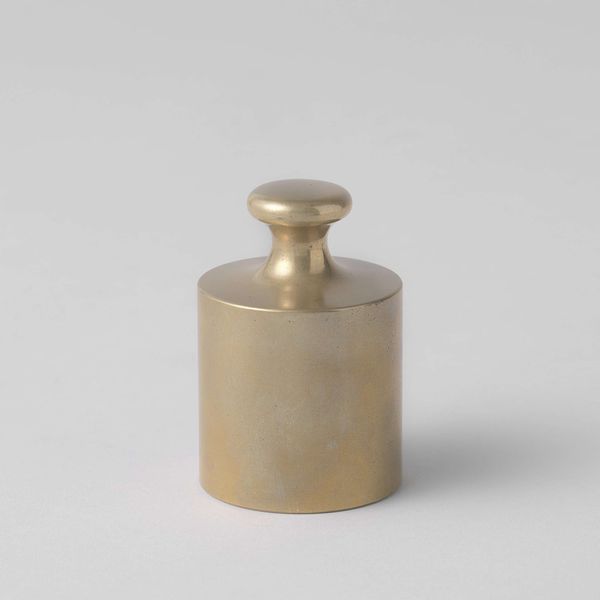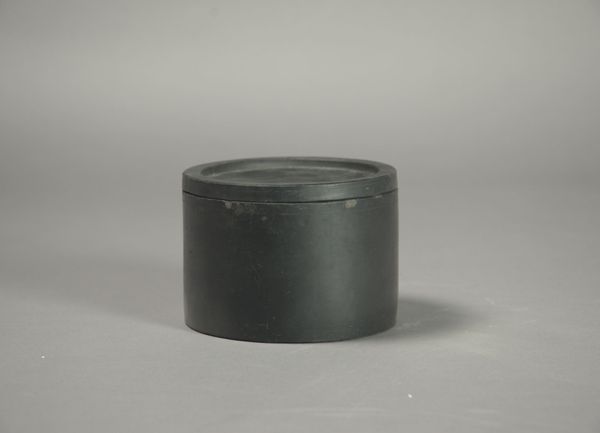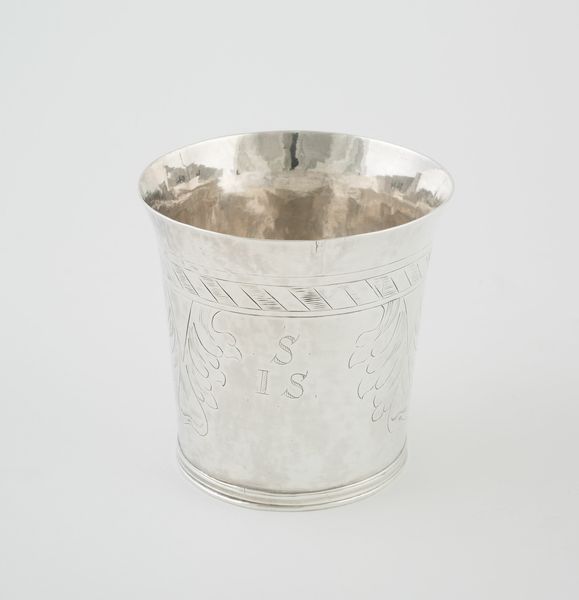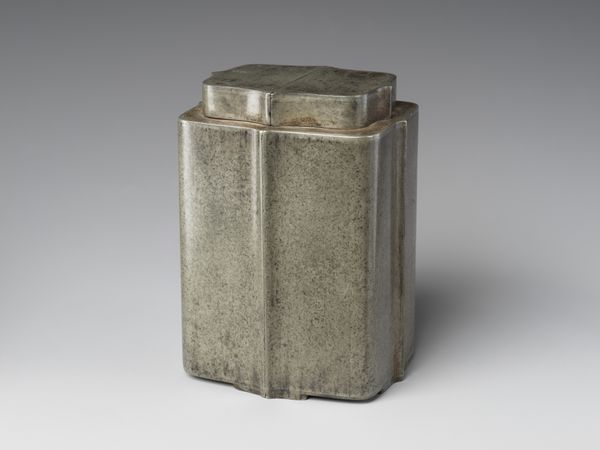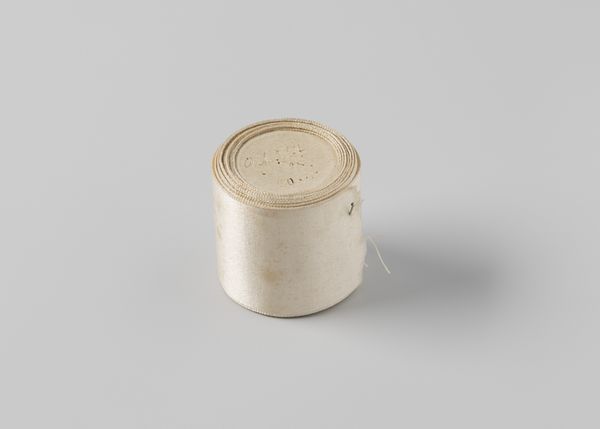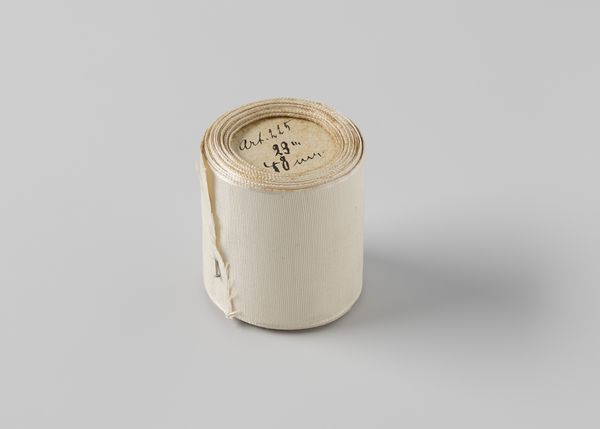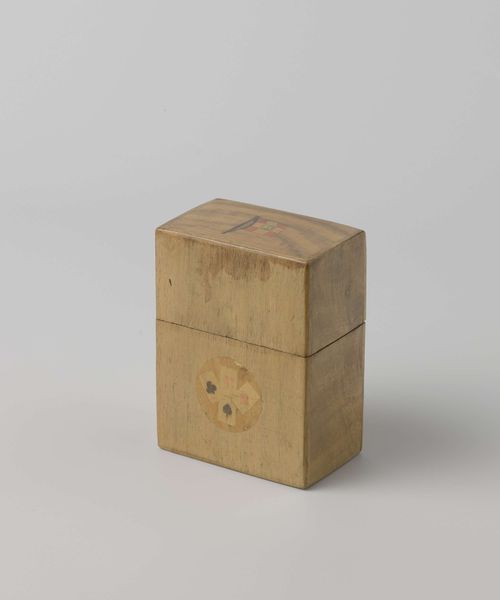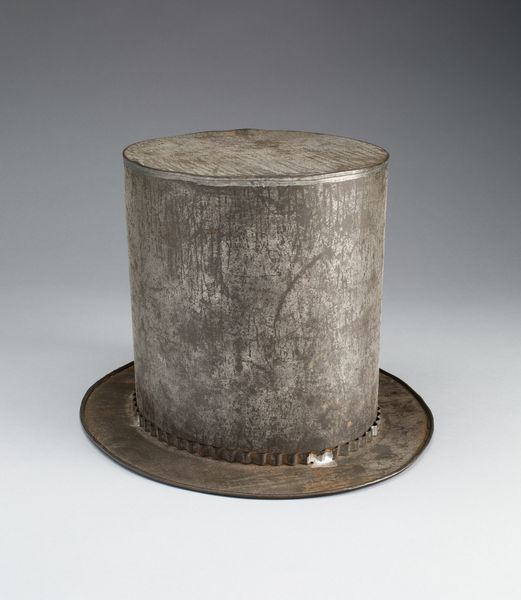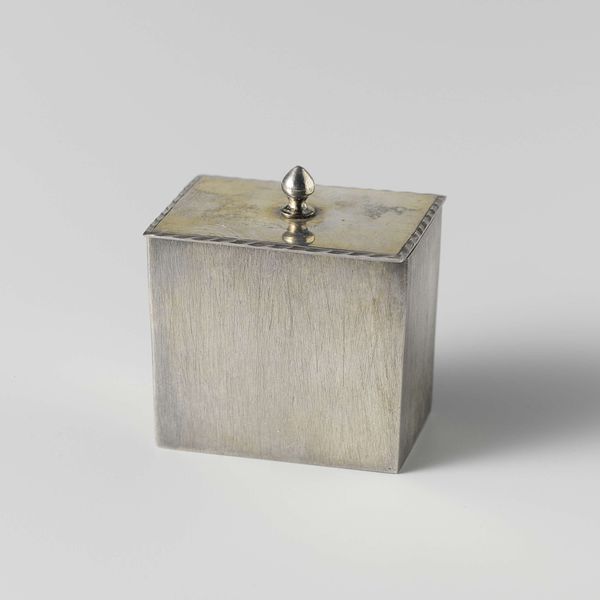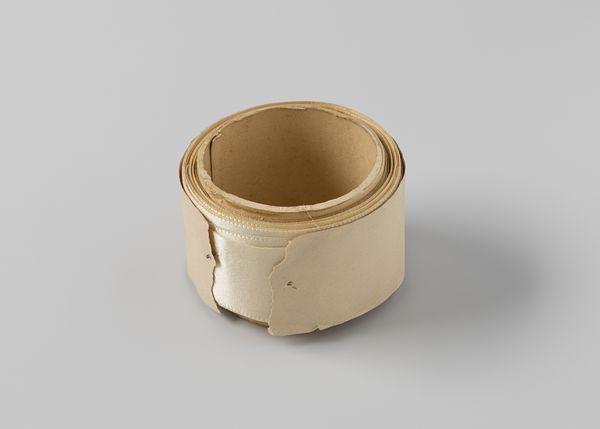
metal, found-object, bronze, sculpture
#
metal
#
asian-art
#
found-object
#
bronze
#
sculpture
#
history-painting
Dimensions: length 24.5 cm, diameter 22.5 cm, calibre 10 cm, weight 69.8 kg
Copyright: Rijks Museum: Open Domain
Curator: Here we have a segment of a cannon, specifically a section taken from a cannon captured at the Battle of Shimonoseki, dating back to 1865. The artifact is made of bronze and other metals, and presented as a sculpture—almost a found object speaking volumes about its violent past. Editor: Wow, its such a simple cylinder and all that, but radiates solemnity. You just know its handled destruction, y'know? Gives off real brutalist vibes. I mean the colour, that sort of worn golden brown against the off-white. Curator: Absolutely. Its visual impact resonates deeply when we place it within its historical context. The Battle of Shimonoseki was a significant clash, where Western powers, like the US, Britain, France, and the Netherlands, engaged in military action against Japan’s Choshu clan. Editor: It’s heavy though, yeah? You feel that imperialistic weight pressing down—its not merely metal; its symbolic. Were talking clashing ideologies materialized into cold, hard…art? Kinda twisted if you really think about it. Curator: Its display today allows us to interrogate that clash, to ask uncomfortable questions. Consider how this cannon piece transforms into an artwork. What statements are being made about cultural exchange and the spoils of conflict when displayed behind glass? Editor: Yeah, its like a trophy almost. Like look what we took, but simultaneously, we remember it...and by putting it in a museum are we elevating or just immortalizing the bad stuff, too? And, maybe a stupid question, but how many lives were cut short with that very tool? Kinda profound if you pause with it. Curator: The sculpture serves as a poignant reminder. While objects often bear witness to grand narratives of power, they simultaneously whisper intimate stories of individual lives touched by global events. Its physical form reminds us of historys complexities, and encourages reflection. Editor: I mean if this chunk of bronze and whatever can hit that sorta tone, like… wow. Its just not just looking—you’re kinda *feeling* history. Now, THATs modern art! I'm seeing what it does. Thanks for chatting it over, man.
Comments
rijksmuseum about 2 years ago
⋮
The coat of arms of the Prince of Nagato are inlaid on this piece of cannon barrel. The Prince was one of the leaders of the group that opposed the opening up of Japan to the West. His troops therefore blockaded the Strait of Shimonoseki between Japan’s two main islands. In 1864 a punitive Western expedition brought an end to this blockade. This fragment was taken as booty by the Dutch navy.
Join the conversation
Join millions of artists and users on Artera today and experience the ultimate creative platform.


